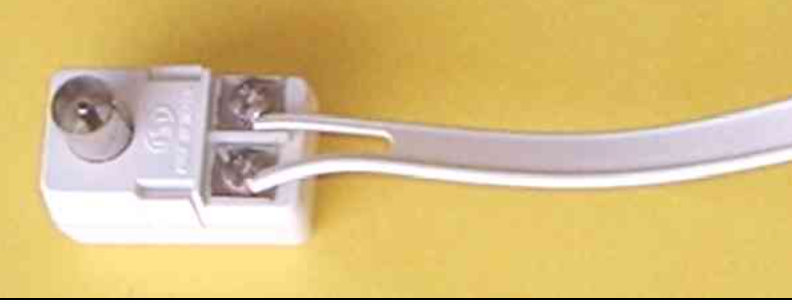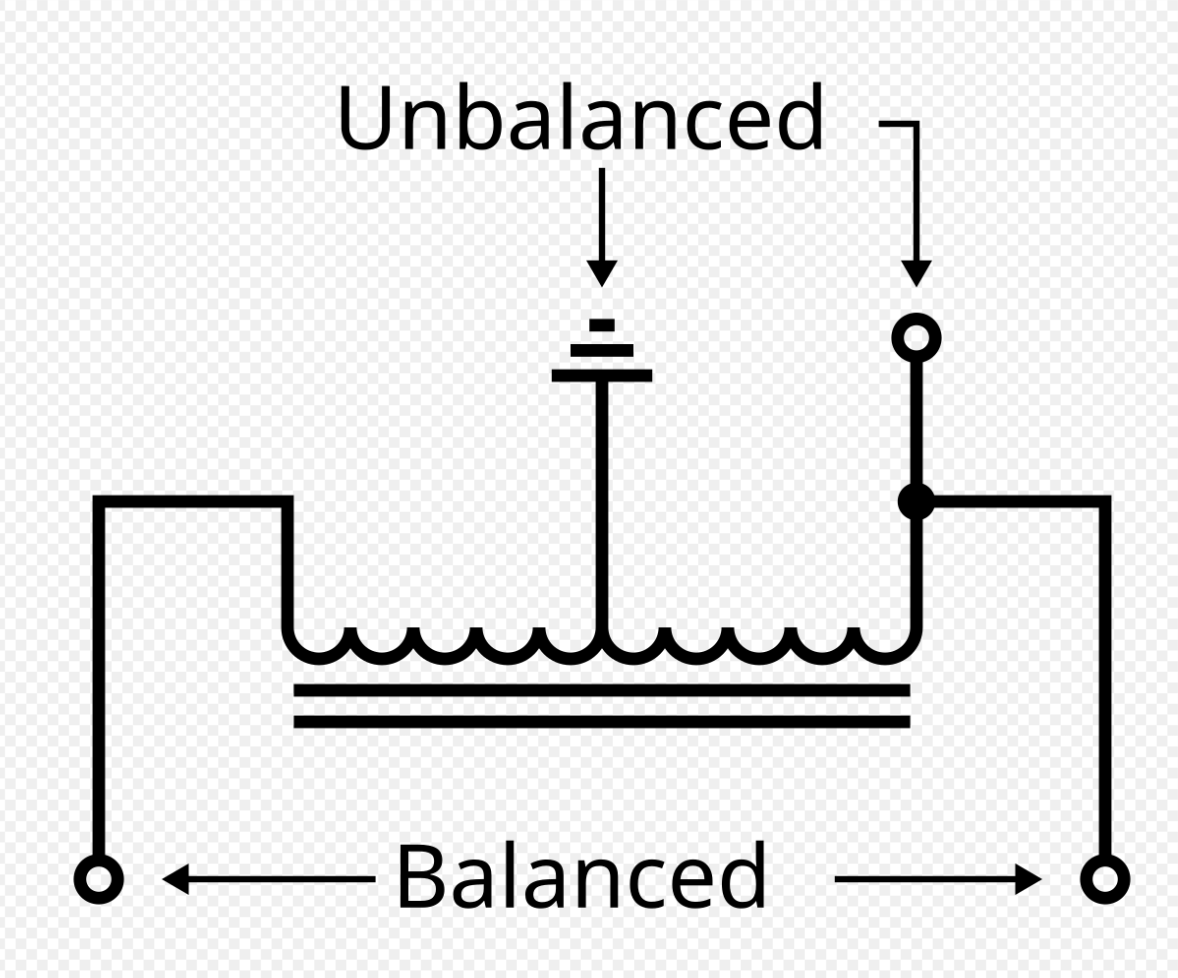Feedline Fundamentals: Ladder Line
In this previous article we looked at some of the fundamentals around coaxial cable, including some of the characteristics that we might see when using coaxial cable in various installations.
In today’s article, we’ll be exploring an older feedline type. Still in use in amateur radio today, this was easy to make, finicky to use and capable of high levels of output power. Often seen in earlier television systems, ladder line-fed antennas were a common fixture of many homes of the day. Also known as “open wire” or “window line”, it was one of the first feedlines used by the transmitters of old. Let’s check it out!
History
Part of the reason that twin-line became popular, was due to its simple construction and ability to feed antennas with high amounts of output power. Paired with the designs' relatively low loss at higher frequencies, this made antennas more efficient, meaning that more of a transmitter's output power made it to the antenna rather than being lost as heat in the feedline.
While we pointed out that coax was designed relatively early as well, the ability for twin-line to be made out of excess wire and scrap insulators as spacers, meant that early-era hams invested much in their systems, gaining performance and experimenting with what types of performance they might expect from any given system.
It would attract some controversy due to its susceptibility to wind and weather, but despite this for many, the ease of repair in comparison to coax-based systems meant that the ladder line feeder would remain king for some time to come. In the world of amateur radio, you’ll find plenty of antennas that have focused on using ladder lines in all sorts of different capacities in their designs.
In the world of amateur radio, you’ll find plenty of antennas that have focused on using ladder lines in all sorts of different capacities in their designs.
You’ll find the J-pole antenna to be pretty popular in the world of handheld FM while the HF-suitable G5RV remains as controversial today as it was when it was initially released. While that might sound like an odd name for an antenna, it’s pretty common for radio amateurs to name their own designs (homebrews) after their callsign. So, if you see something like that when you’re researching hardware, chances are there was a radio amateur involved in its design along the way.
While that might sound like an odd name for an antenna, it’s pretty common for radio amateurs to name their own designs (homebrews) after their callsign. So, if you see something like that when you’re researching hardware, chances are there was a radio amateur involved in its design along the way.
Construction & The Balun
While these days we’ll typically find ladder lines to be commercially made, in the earlier days radio amateurs and enthusiasts would typically make their own ladder lines using wire and homemade spacers to form the “ladder”. If you’re interested in making your own ladder line, it’s still possible though and many still experiment with these designs in the modern world. Often, for high-frequency (HF) antennas though, space can be a major restriction in many of these designs. Unlike coaxial cable which can happily be coiled, ladder line needs to be raised correctly with minimal disruptions to be able to radiate effectively.
One thing you’ll find mentioned when dealing with many receiving antennas can be the balun (BAlanced / UNbalanced) for matching purposes. Also referred to as a BAlancing UNit, the balun provides a way to connect balanced and unbalanced lines while maintaining the correct impedance. While they typically vary according to their design, Baluns are an integral part of correctly constructing and installing an antenna with good electrical performance. While you won’t need to know everything about baluns to explore the world of radio, understanding their place in a receiving or transmitting system is an essential part of learning to use the radio spectrum effectively.
While you won’t need to know everything about baluns to explore the world of radio, understanding their place in a receiving or transmitting system is an essential part of learning to use the radio spectrum effectively.
There’s a wide range of cheap and easy-to-install baluns available for use with the RTL-SDR unit to help improve receiving performance in the high-frequency part of the spectrum.
The Specifics
When we examined coaxial cable, we noted that the impedance typically varied according to the type of system in use. Television coaxial cable would run at a different impedance than radio coax.
Twin lead, or ladder line is no different, coming in an assortment of different specifications. Television cable, for instance, would typically run at 300Ω being matched down to 75Ω via a balun.
While the High-Frequency ladder line would more commonly be around 450Ω which would then be matched to 50Ω. There are different types of ladder lines available for use, but for typical installations, understanding the two will be enough to get you started with the concept and carrying out experiments of your own to learn more.
The Wavelength
In previous articles, we’ve talked about the relationship of frequency with regard to the size of the emitted wave. We’ve also gone to great lengths to impart the importance of being able to research and understand this effectively.
Radio amateurs will typically talk about this in meters or centimetres. So, 144.000mhz also known as the 2-meter band has a two-meter wavelength, while the high-frequency 14.300mhz band or 20mtr band has a wavelength of around 20mtrs.
It’s important to realise that a fundamental concept exists here, barring a few exceptions, antennas will typically perform best at the optimum length with regards to the centre frequency, or multiples thereof.
Feedlines aren’t hugely different in this nature as they typically perform best at spacing relative to their frequency of operation. So a two-meter antenna mounted two meters above a metal roof (one wavelength) will perform far better than one that's mounted at roof level.
Remembering nuances such as this will make life far easier when the time comes to design and install your antennas.
In Closing
It’s important to point out that there's only so much you can fit into a medium or blog post before it becomes boring and unwieldy. So while we’re trying to impart some foundation concepts here, the reality is that teaching everything is simply outside the scope of a single post.
What we can do though, is impart useful snippets, to assist you in both getting started as well as understanding what requires further research. And while many books have been written on topics such as these, like many resources in life, some are more valuable than others.
With that said, if you enjoyed this article one thing you might enjoy as a follow-on resource, would be a copy of the ARRL radio amateur’s handbook. This resource is cheap and packed full of useful designs for antennas, baluns and other essential tools for learning about the radio spectrum.
The best bit is, that while the newer copies have more modern or varied designs, even the older book has plenty to offer in the way of fundamentals.
So, if you’re looking for more resources of a learning nature, this can be a great place to start.
Medium has recently made some algorithm changes to improve the discoverability of articles like this one. These changes are designed to ensure that high-quality content reaches a wider audience, and your engagement plays a crucial role in making that happen.
If you found this article insightful, informative, or entertaining, we kindly encourage you to show your support. Clapping for this article not only lets the author know that their work is appreciated but also helps boost its visibility to others who might benefit from it.
🌟 Enjoyed this article? Join the community! 🌟
📢 Join our OSINT Telegram channel for exclusive updates or
📢 Follow our crypto Telegram for the latest giveaways
🐦 Follow us on Twitter and
🟦 We’re now on Bluesky!
🔗 Articles we think you’ll like:
- What The Tech?! Rocket Engines
- OSINT Investigators Guide to Self Care & Resilience
✉️ Want more content like this? Sign up for email updates


























